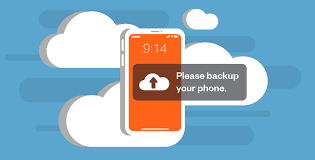
How To Tackle Impulsive Spending: Picture this: you’re walking down the street, minding your own business, when you see it – the perfect pair of shoes. They’re calling out to you, begging to be taken home. You know you shouldn’t, but before you know it, you’re walking out of the store with a lighter wallet and a smile on your face. EnoughInfo.com

Impulsive spending can be a tempting trap that we all fall into from time to time. But don’t worry, you don’t have to be a victim of your own impulses. With a little self-control and a few simple strategies, you can learn how to resist the urge to overspend and keep your finances in check. So let’s dive in and discover how to tackle impulsive spending once and for all!
What is impulsive spending?
Impulsive spending is the act of making purchases without careful consideration or planning. It’s a type of spending behavior that is often driven by emotions, impulses, or desires rather than rational decision-making. Impulsive spending can occur for various reasons, such as feeling stressed, bored, or simply being in a shopping environment that triggers the desire to buy.
The consequences of impulsive spending can include financial strain, debt, and difficulty in meeting financial goals. It’s essential to recognize impulsive spending behavior and learn ways to tackle it to maintain healthy financial habits. How to Reduce Snoring by Home Remedies
FAQs & Answers On How To Tackle Impulsive Spending
1, How can I avoid impulse buying online?
To avoid impulse buying online, you can use a browser extension that blocks access to shopping websites, unsubscribe from marketing emails, disable one-click ordering, and avoid browsing shopping websites when you’re bored or stressed.
2, What should I do if I give in to impulse buying?
If you give in to impulse buying, it’s important not to beat yourself up. Instead, take note of what triggered the impulse and find ways to avoid it in the future. You can also return the item if possible or sell it to recoup some of the costs.
3, How long does it take to break the habit of impulsive spending?
Breaking the habit of impulsive spending can take time and varies from person to person. It’s important to be patient and consistent in implementing strategies to tackle impulsive spending. Over time, with practice and commitment, you can form new habits and avoid impulsive spending.
Read Also; 120 Romantic Missing You Messages For Him
How do you know it’s becoming a problem
- Debt is increasing as a result of your expenditures
- Spending too much prevents you from meeting both short-term and long-term needs.
- You keep your expenditures a secret from your family.
- Even knowing how much you spend on “stuff” is not something you want to do.
- When you’re sad, lonely, or angry, you shop to make yourself feel better.
- Unease or even fear arises at the notion of not buying, whether in-person or online and of not having credit cards on hand.
- You start arguing with people about your spending habits.
How to tackle impulsive spending
Emotional expenditure and impulsive spending are closely related. spending that is motivated only by feelings of fear, worry, tension, or despair rather than reason and analysis. According to research, most consumers who spend emotionally do so in an effort to take control of some aspects of their lives when it is obvious that the others are failing.
Many people have plunged farther into mental wreckage and, of course, financial turmoil in an effort to “feel good”. Occasionally treating yourself to something special after a trying day at work or in the midst of a traumatic event is not particularly wrong; the issue arises when it develops into a habit and the costs balloon. There have been instances where people have spent thousands of dollars on things they don’t need just to feel some dopamine, depending on their financial position.
The major issue with impulsive spending is that it almost never occurs on purpose. The spender has little to no place in their budget for these “August” costs. Although it may not seem important, there is no such thing as “free money” or “idle money” in the world of finance.
So, here are 12 ways on how to tackle impulsive spending:
Create a budget and stick to it
One of the best ways to tackle impulsive spending is to create a budget and stick to it. List all your expenses and income, then allocate specific amounts of money for each category. This will help you track your spending and avoid overspending.
Use cash instead of cards
If you find yourself constantly overspending with credit or debit cards, try using cash instead. This way, you’ll have a physical limit on how much you can spend, and you’ll be more mindful of your purchases. How To Earn In Ragnarok Labyrinth NFT
Wait before making purchases
When you see something you want to buy, wait at least 24 hours before making the purchase. This will give you time to consider whether you really need the item or if it’s just a momentary impulse.
Make a shopping list
Before going shopping, make a list of the items you need to buy. Stick to the list and avoid buying anything that’s not on it.
Avoid shopping when emotional
When you’re feeling stressed, sad, or bored, it’s easy to turn to shopping as a way to feel better. Instead, find other ways to cope with your emotions, like exercising, reading, or spending time with loved ones.
Fix the fundamental problem
Spending money emotionally is comparable to abusing alcohol as a way of “escaping” from the problems at hand. In addition, much like alcohol consumption, the issue persists after alcohol’s sleepy effects have gone off.
The best course of action is almost always to address the underlying issue. If you’re feeling stressed out, take a break from work (if your job allows it), and if you’re grieving, obtain emotional or psychological support to get through the time. However, keep in mind that going overboard with your spending will leave you much worse off after the episode is through.
Identify triggers
Take note of the situations or emotions that trigger your impulse to spend. Once you’ve identified them, you can find ways to avoid or manage them.
Set financial goals
Setting financial goals can help you stay motivated to save money and avoid impulsive spending. Create short-term and long-term goals, and track your progress regularly.
Practice mindful spending
When making purchases, take the time to consider if it’s a need or a want. Mindful spending involves being aware of your purchases and making intentional decisions.
Find cheaper alternatives
Look for cheaper alternatives to the items you want to buy. For example, if you’re considering buying a new book, see if you can borrow it from the library instead.
Unsubscribe from marketing emails
Marketing emails can be tempting and may trigger impulsive spending. Unsubscribe from marketing emails to avoid being tempted by deals and promotions.
Reward yourself
Set up a reward system for yourself when you meet your financial goals. This can motivate you to stay on track and avoid impulsive spending.
Conclusion
In conclusion, tackling impulsive spending is all about building healthy financial habits and practicing self-control. By creating a budget, identifying triggers, and finding alternatives to impulsive purchases, you can maintain control over your spending and avoid financial strain.
Remember, breaking the habit of impulsive spending takes time, patience, and commitment. But with consistent effort, you can build a strong foundation of financial health and make intentional decisions that align with your goals and values. By taking the time to assess your spending habits and implementing strategies to tackle impulsive spending, you’ll be well on your way to achieving financial stability and security. How to Face Your Fears Head-On (The Ultimate Guide)
We Also Recommend
How To Make $10000 With NFT Art( 2023 Update)
How To Make Money With Blockchain Technology
30 Ways To Make Money Online And Offline




